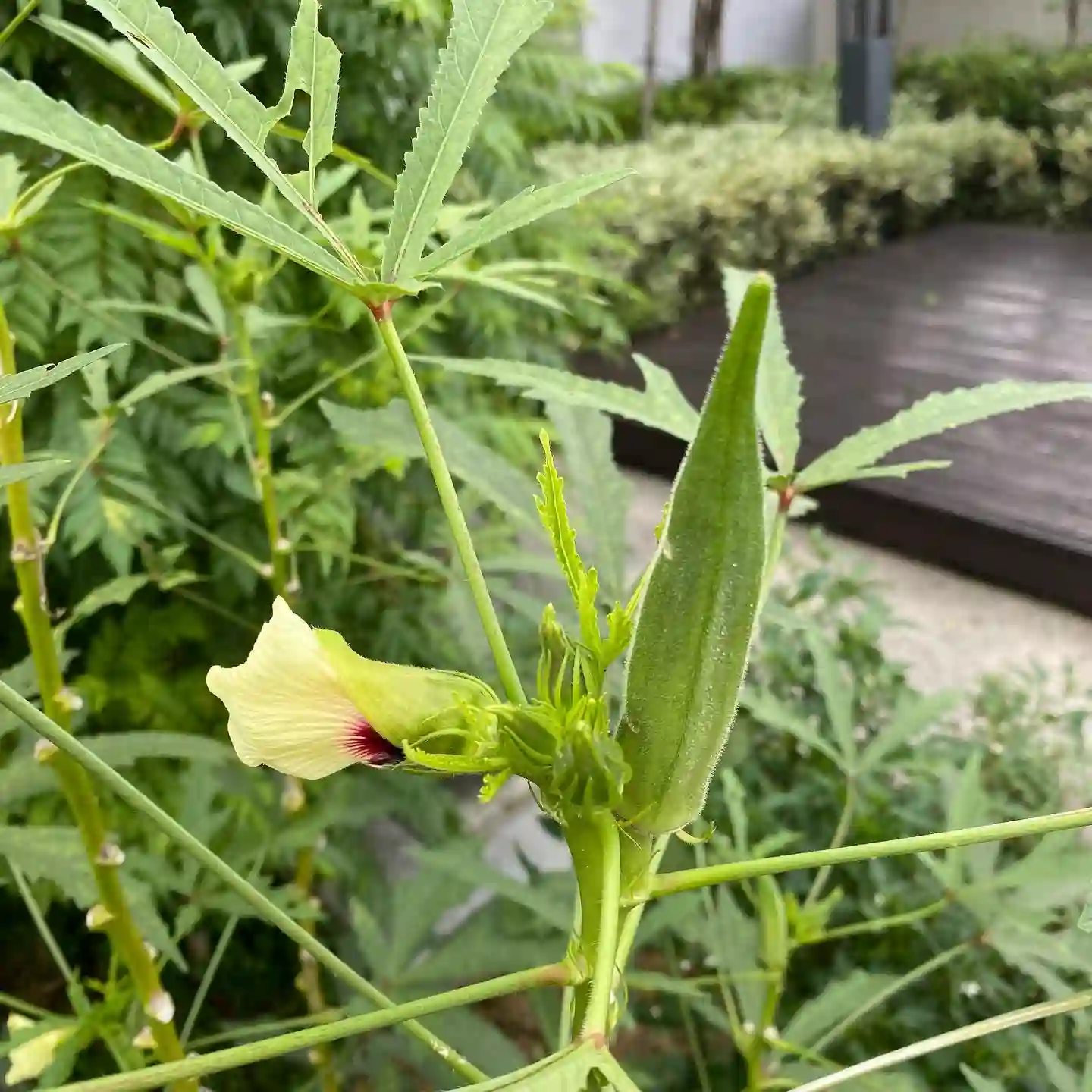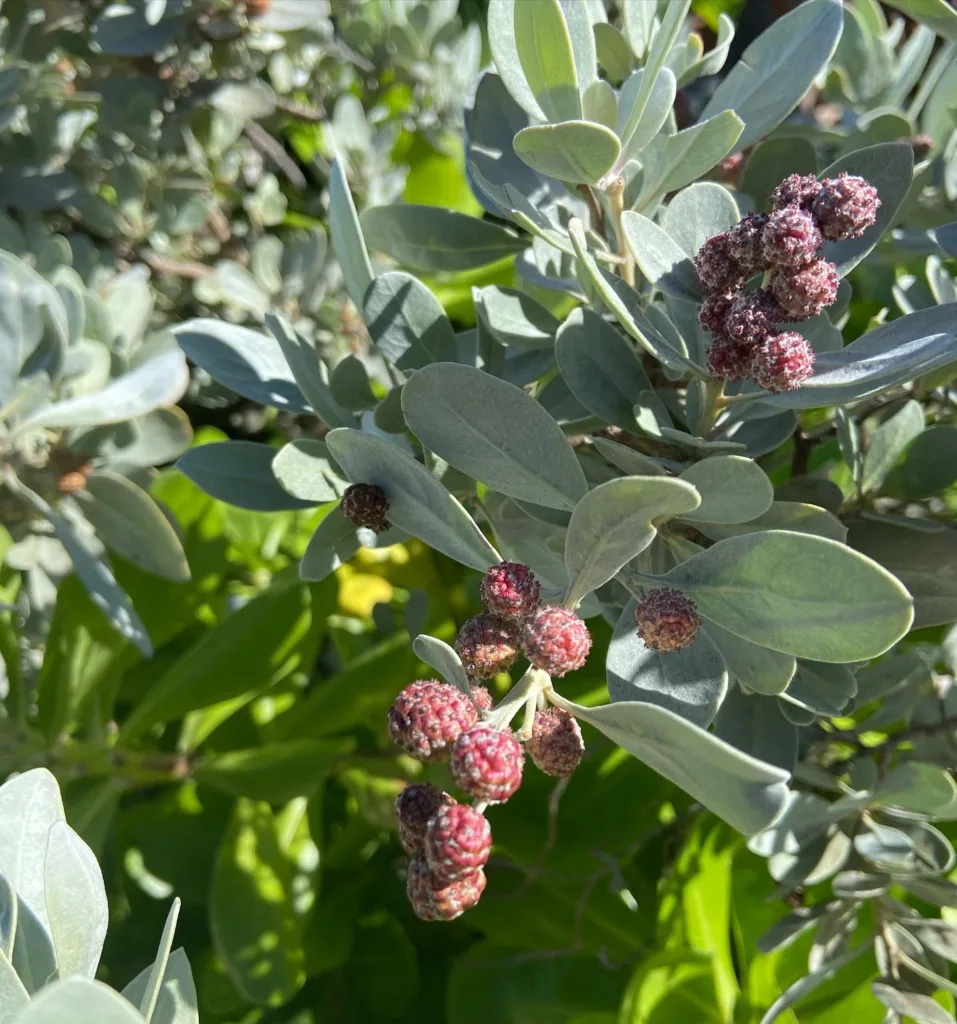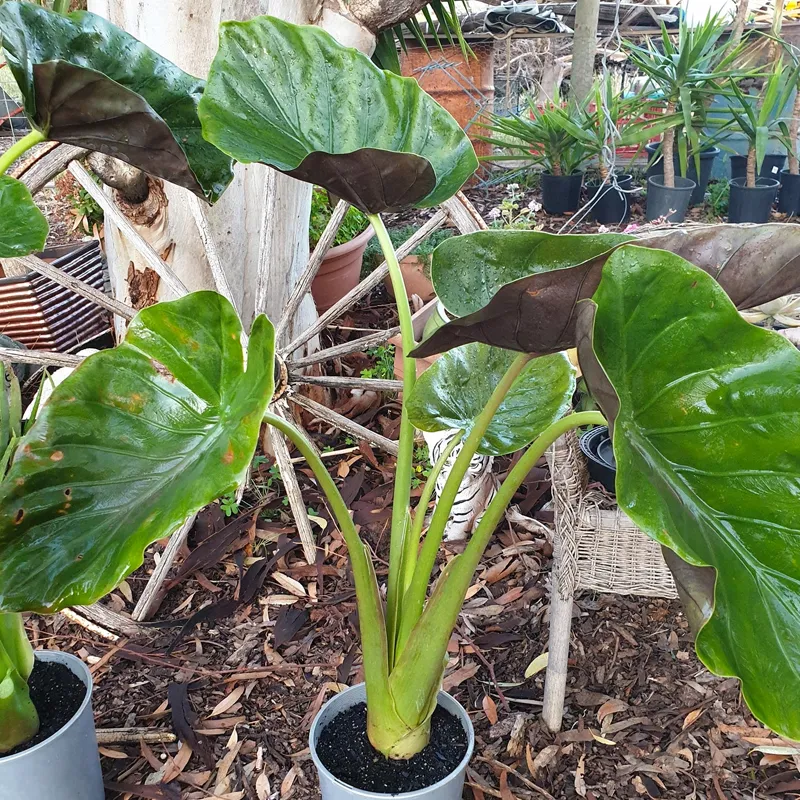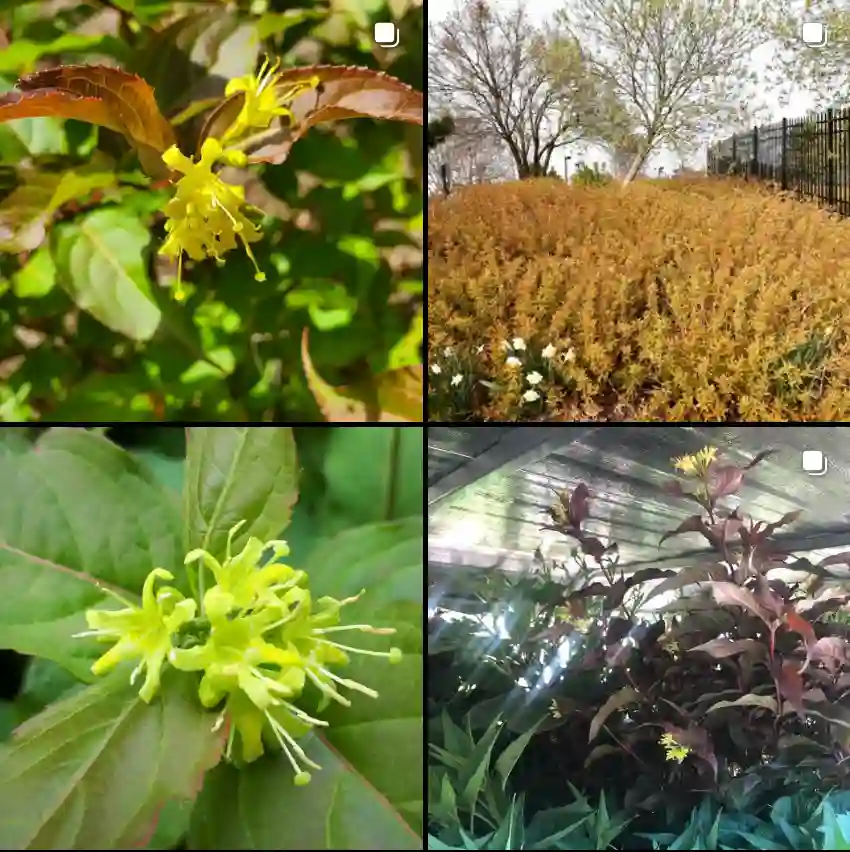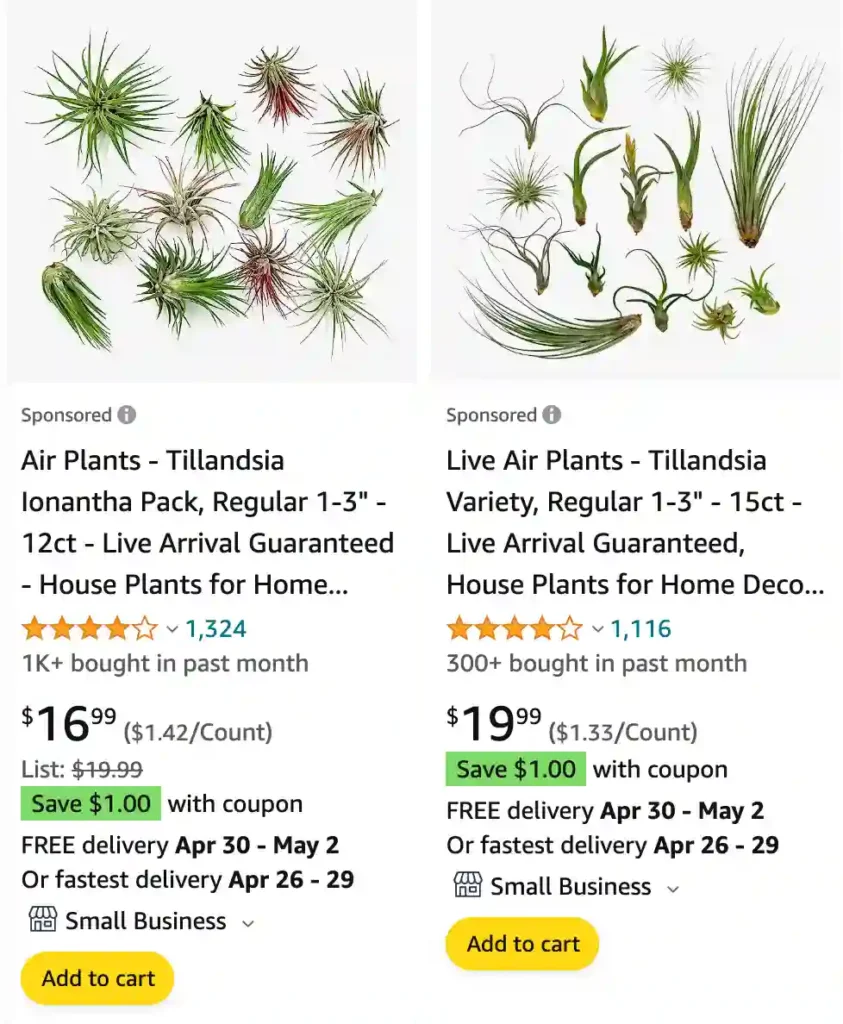
Tillandsia: My Air Plant Obsession
I’m Ferb Vu, and I have a confession. I’m obsessed with air plants. Not just any air plants, mind you, but the fascinating genus Tillandsia. These quirky, resilient plants have completely captured my imagination, and I’m eager to share my enthusiasm with you.
What Makes Tillandsia So Special?
First off, let’s clear up a common misconception. While they’re called “air plants,” Tillandsia don’t actually live on air alone. They’re epiphytes, meaning they grow on other plants, typically trees, for support. But unlike parasites, they don’t steal nutrients from their host. Instead, they absorb moisture and nutrients through specialized structures on their leaves called trichomes. These trichomes give many Tillandsia a fuzzy or silvery appearance, adding to their unique beauty.
What truly sets Tillandsia apart is their incredible diversity. With over 650 recognized species, they come in a mind-boggling array of shapes, sizes, and colors. Some, like Tillandsia ionantha, are tiny and compact, forming rosettes no bigger than a golf ball. Others, like Tillandsia xerographica, can grow to enormous sizes, their silvery leaves arching gracefully like a sculpture. And then there’s the iconic Tillandsia usneoides, better known as Spanish moss, which drapes from trees in ethereal curtains of gray-green.
A World of Tillandsia
Exploring the world of Tillandsia is like embarking on a botanical treasure hunt. Each species has its own unique personality and care requirements. Some thrive in humid environments, while others prefer arid conditions. Some produce vibrant blooms, while others are more subdued in their beauty. Here are:
- Tillandsia abbreviata H.Luther
- Tillandsia abdita L.B.Sm.
- Tillandsia achyrostachys É.Morren ex Baker
- Tillandsia acuminata L.B.Sm.
- Tillandsia adamsii Read
- Tillandsia adpressiflora Mez
- Tillandsia aequatorialis L.B.Sm.
- Tillandsia aeranthos (Loisel.) Desf.
- Tillandsia afonsoana Strehl
- Tillandsia aguascalientensis C.S.Gardner
- Tillandsia aizoides Mez
- Tillandsia albertiana Verv.
- Tillandsia albida Mez & Purpus
- Tillandsia alcatrazensis Sabino & Leodeg.
- Tillandsia alfredo-laui Rauh & H.Lehm.
- Tillandsia alto-mayoensis Gouda
- Tillandsia alvareziae Rauh
- Tillandsia andicola Gillies ex Baker
- Tillandsia andreana É.Morren ex André
- Tillandsia andrieuxii (Mez) L.B.Sm.
- Tillandsia angulosa Mez
- Tillandsia antillana L.B.Sm.
- Tillandsia appenii (Rauh) J.R.Grant
- Tillandsia araujei Mez
- Tillandsia archeri L.B.Sm.
- Tillandsia arenicola L.B.Sm.
- Tillandsia arequitae (André) André ex Mez
- Tillandsia argentea Griseb.
- Tillandsia argentina C.H.Wright
- Tillandsia arhiza Mez
- Tillandsia ariza-juliae L.B.Sm. & Jiménez
- Tillandsia arroyoensis (W.Weber & Ehlers) Espejo & López-Ferr.
- Tillandsia atenangoensis Ehlers & Wülfingh.
- Tillandsia atroviolacea Ehlers & Koide
- Tillandsia atroviridipetala Matuda
- Tillandsia aurea Mez
- Tillandsia australis Mez
- Tillandsia bagua-grandensis Rauh
- Tillandsia baileyi Rose ex Small
- Tillandsia bakiorum H.Luther
- Tillandsia balbisiana Schult. & Schult.f.
- Tillandsia baliophylla Harms
- Tillandsia balsasensis Rauh
- Tillandsia bandensis Baker
- Tillandsia × baptistana C.N.Gonç. & Azevêdo-Gonç.
- Tillandsia barbeyana Wittm.
- Tillandsia barclayana Baker
- Tillandsia barfussii W.Till
- Tillandsia barrosoae W.Till
- Tillandsia barthlottii Rauh
- Tillandsia bartramii Elliott
- Tillandsia bella Strehl
- Tillandsia belloensis W.Weber
- Tillandsia bergeri Mez
- Tillandsia × bergiana Takiz. & Koide
- Tillandsia bermejoensis H.Hrom. ex Rauh
- Tillandsia bernalensis Hern.-Cárdenas, Espejo, López-Ferr. & L.Hern.
- Tillandsia biflora Ruiz & Pav.
- Tillandsia bismarckii Rauh & H.Lehm.
- Tillandsia bochilensis Ehlers ex Rauh & E.Gross
- Tillandsia boliviana Mez
- Tillandsia bongarana L.B.Sm.
- Tillandsia bonita Versieux & Martinelli
- Tillandsia boqueronensis Ehlers
- Tillandsia borealis López-Ferr. & Espejo
- Tillandsia borinquensis Cedeño-Mald. & Proctor
- Tillandsia borjaensis Manzan. & W.Till
- Tillandsia botterii É.Morren ex Baker
- Tillandsia bourgaei Baker
- Tillandsia brachycaulos Schltdl.
- Tillandsia brachyphylla Baker
- Tillandsia brealitoensis L.Hrom.
- Tillandsia brenneri Rauh
- Tillandsia brevicapsula Gilmartin
- Tillandsia brevilingua Mez
- Tillandsia brevior L.B.Sm.
- Tillandsia breviturneri Betancur & Néstor García
- Tillandsia buchlohii Rauh
- Tillandsia bulbosa Hook.
- Tillandsia buseri Mez
- Tillandsia butzii Mez
- Tillandsia caballosensis Ehlers
- Tillandsia cacticola L.B.Sm.
- Tillandsia caerulea Kunth
- Tillandsia cajamarcensis Rauh
- Tillandsia calcicola L.B.Sm. & Proctor
- Tillandsia califani Rauh
- Tillandsia caliginosa W.Till
- Tillandsia callichroma L.Hrom.
- Tillandsia calochlamys Ehlers & L.Hrom.
- Tillandsia calothyrsus Mez
- Tillandsia caloura Harms
- Tillandsia camargoensis L.Hrom.
- Tillandsia candelifera Rohweder
- Tillandsia candida Leme
- Tillandsia canescens Sw.
- Tillandsia capillaris Ruiz & Pav.
- Tillandsia capistranoensis Ehlers & W.Weber
- Tillandsia capitata Griseb.
- Tillandsia caput-medusae É.Morren
- Tillandsia cardenasii L.B.Sm.
- Tillandsia carlos-hankii Matuda
- Tillandsia carlsoniae L.B.Sm.
- Tillandsia carminea W.Till
- Tillandsia carnosa L.B.Sm.
- Tillandsia carrierei André
- Tillandsia carrilloi Véliz & Feldhoff
- Tillandsia castelensis Leme & W.Till
- Tillandsia castellanii L.B.Sm.
- Tillandsia catimbauensis Leme, W.Till & J.A.Siqueira
- Tillandsia caulescens Brongn. ex Baker
- Tillandsia cauliflora Mez & Wercklé
- Tillandsia cauligera Mez
- Tillandsia cees-goudae Gouda
- Tillandsia celata Ehlers & Lautner
- Tillandsia cernua L.B.Sm.
- Tillandsia cerosa W.Till & Barfuss
- Tillandsia cerrateana L.B.Sm.
- Tillandsia chaetophylla Mez
- Tillandsia chalcatzingensis Gonz.-Rocha, Cerros, López-Ferr. & Espejo
- Tillandsia champaraensis L.Hrom. & H.Hrom.
- Tillandsia chapalillaensis Ehlers & Lautner
- Tillandsia chapeuensis Rauh
- Tillandsia chartacea L.B.Sm.
- Tillandsia chasmophyta Büneker, R.Pontes & K.Soares
- Tillandsia chiapensis C.S.Gardner
- Tillandsia chicoasena H.Hrom. & L.Hrom.
- Tillandsia chiletensis Rauh
- Tillandsia chingacensis Aguirre-Santoro, E.Hern.-A. & Betancur
- Tillandsia chlorophylla L.B.Sm.
- Tillandsia chontalensis Baker
- Tillandsia churinensis Rauh
- Tillandsia chusgonensis L.Hrom.
- Tillandsia circinnatioides Matuda
- Tillandsia clavigera Mez
- Tillandsia coalcomanensis Ehlers
- Tillandsia cochabambae E.Gross & Rauh
- Tillandsia coinaensis Ehlers
- Tillandsia colganii Ehlers
- Tillandsia colorata L.Hrom.
- Tillandsia comarapaensis H.Luther
- Tillandsia comitanensis Ehlers
- Tillandsia compacta Griseb.
- Tillandsia complanata Benth.
- Tillandsia compressa Bertero ex Schult. & Schult.f.
- Tillandsia comulcoensis Ehlers
- Tillandsia concolor L.B.Sm.
- Tillandsia confertiflora André
- Tillandsia confinis L.B.Sm.
- Tillandsia copalaensis Ehlers
- Tillandsia copanensis Rauh & Rutschm.
- Tillandsia copynii Gouda
- Tillandsia × cornissaensis Gouda
- Tillandsia × correalei H.Luther
- Tillandsia cossonii Baker
- Tillandsia cotagaitensis L.Hrom.
- Tillandsia crenulipetala Mez
- Tillandsia cretacea L.B.Sm.
- Tillandsia crista-galli Ehlers
- Tillandsia crocata (É.Morren) N.E.Br.
- Tillandsia cryptopoda L.B.Sm.
- Tillandsia cuatrecasasii L.B.Sm.
- Tillandsia cucaensis Wittm.
- Tillandsia × cuchnichim R.Guess & V.Guess
- Tillandsia cucullata L.B.Sm.
- Tillandsia curvifolia (Ehlers & Rauh) Ehlers
- Tillandsia dasyliriifolia Baker
- Tillandsia deflexa L.B.Sm.
- Tillandsia delicata Ehlers
- Tillandsia demissa L.B.Sm.
- Tillandsia denudata André
- Tillandsia deppeana Steud.
- Tillandsia dexteri H.Luther
- Tillandsia diaguitensis A.Cast.
- Tillandsia dichromantha Hern.-Cárdenas, López-Ferr. & Espejo
- Tillandsia dichrophylla L.B.Sm.
- Tillandsia didisticha (É.Morren) Baker
- Tillandsia didistichoides Mez
- Tillandsia diguetii Mez & Rol.-Goss.
- Tillandsia disticha Kunth
- Tillandsia divaricata Benth.
- Tillandsia × donatoi Leme
- Tillandsia dorisdaltoniae Ibisch, R.Vásquez, I.G.Vargas & W.Till
- Tillandsia dorotheae Rauh
- Tillandsia dorotheehaseae Hase
- Tillandsia dugesii Baker
- Tillandsia duidae L.B.Sm.
- Tillandsia dura Baker
- Tillandsia durangensis Rauh & Ehlers
- Tillandsia duratii Vis.
- Tillandsia ecarinata L.B.Sm.
- Tillandsia edithae Rauh
- Tillandsia eistetteri Ehlers
- Tillandsia eizii L.B.Sm.
- Tillandsia elizabethae Rauh
- Tillandsia elongata Kunth
- Tillandsia eltoniana E.Pereira
- Tillandsia elusiva Pinzón, I.Ramírez & Carnevali
- Tillandsia elvirae-grossiae Rauh
- Tillandsia emergens Mez & Sodiro
- Tillandsia engleriana Wittm.
- Tillandsia erecta Gillies ex Baker
- Tillandsia erici Ehlers
- Tillandsia ermitae L.Hrom.
- Tillandsia ertonii E.H.Souza & Leme
- Tillandsia erubescens Schltdl.
- Tillandsia escahuascensis Espejo, López-Ferr., Ceja & A.Mend.
- Tillandsia espinosae L.B.Sm.
- Tillandsia esseriana Rauh & L.B.Sm.
- Tillandsia excavata L.B.Sm.
- Tillandsia excelsa Griseb.
- Tillandsia exserta Fernald
- Tillandsia extensa Mez
- Tillandsia fasciculata Sw.
- Tillandsia fascifolia Flores-Cruz & Diego-Esc.
- Tillandsia fassettii L.B.Sm.
- Tillandsia fendleri Griseb.
- Tillandsia ferreyrae L.B.Sm.
- Tillandsia ferrisiana L.B.Sm.
- Tillandsia festucoides Brongn. ex Mez
- Tillandsia filifolia Schltdl. & Cham.
- Tillandsia flabellata Baker
- Tillandsia flagellata L.B.Sm.
- Tillandsia flavobracteata Matuda
- Tillandsia flavoviolacea Gouda
- Tillandsia flexuosa Sw.
- Tillandsia floresensis Ehlers
- Tillandsia floribunda Kunth
- Tillandsia × floridana (L.B.Sm.) H.Luther
- Tillandsia foliosa M.Martens & Galeotti
- Tillandsia fragrans André
- Tillandsia francisci W.Till & J.R.Grant
- Tillandsia frank-hasei J.R.Grant
- Tillandsia fresnilloensis W.Weber & Ehlers
- Tillandsia friesii Mez
- Tillandsia fuchsii W.Till
- Tillandsia funebris A.Cast.
- Tillandsia fusiformis L.B.Sm.
- Tillandsia gardneri Lindl.
- Tillandsia geissei Phil.
- Tillandsia geminiflora Brongn.
- Tillandsia genseri Rauh
- Tillandsia gerd-muelleri W.Weber
- Tillandsia gerdae Ehlers
- Tillandsia gilliesii Baker
- Tillandsia glabrior (L.B.Sm.) López-Ferr., Espejo & I.Ramírez
- Tillandsia glauca L.B.Sm.
- Tillandsia globosa Wawra
- Tillandsia gloriae F.Gruber, W.Till & Barfuss
- Tillandsia glossophylla L.B.Sm.
- Tillandsia gracillima L.B.Sm.
- Tillandsia graebeneri Mez
- Tillandsia grandispica Ehlers
- Tillandsia grao-mogolensis Silveira
- Tillandsia grazielae Sucre & R.Braga
- Tillandsia grossispicata Espejo, López-Ferr. & W.Till
- Tillandsia grovesiae Manzan. & W.Till
- Tillandsia gruberi (Ehlers) J.R.Grant
- Tillandsia guatemalensis L.B.Sm.
- Tillandsia guelzii Rauh
- Tillandsia guenther-nolleri Ehlers
- Tillandsia guerreroensis Rauh
- Tillandsia gutteana W.Weber
- Tillandsia gymnobotrya Baker
- Tillandsia hammeri Rauh & Ehlers
- Tillandsia hansonii Manzan. & Gouda
- Tillandsia harrisii Ehlers
- Tillandsia hasei Ehlers & L.Hrom.
- Tillandsia hegeri Ehlers
- Tillandsia heliconioides Kunth
- Tillandsia helmutii L.Hrom.
- Tillandsia hemkeri Rauh
- Tillandsia heterandra André
- Tillandsia heteromorpha Mez
- Tillandsia heterophylla É.Morren
- Tillandsia heubergeri Ehlers
- Tillandsia hildae Rauh
- Tillandsia hintoniana L.B.Sm.
- Tillandsia hiroi Manzan. & Gouda
- Tillandsia hirta W.Till & L.Hrom.
- Tillandsia hirtzii Rauh
- Tillandsia hoeijeri H.Luther
- Tillandsia hofackeri Ehlers
- Tillandsia hondurensis Rauh
- Tillandsia horstii Rauh
- Tillandsia hotteana Urb.
- Tillandsia huajuapanensis Ehlers & Lautner
- Tillandsia huamelulaensis Ehlers
- Tillandsia huarazensis Ehlers & W.Till
- Tillandsia hubertiana Matuda
- Tillandsia humilis C.Presl
- Tillandsia iassuensis L.Hrom. & H.Hrom.
- Tillandsia ignesiae Mez
- Tillandsia ilseana W.Till, Halbritter & Zecher
- Tillandsia imperialis É.Morren ex Roezl
- Tillandsia imporaensis Ehlers
- Tillandsia incarnata Kunth
- Tillandsia indigofera Mez & Sodiro
- Tillandsia inopinata Espejo, López-Ferr. & W.Till
- Tillandsia intermedia Mez
- Tillandsia interrupta Mez
- Tillandsia intumescens L.B.Sm.
- Tillandsia ionantha Planch.
- Tillandsia ionochroma André ex Mez
- Tillandsia itatiensis E.H.Souza & Leodeg.
- Tillandsia itaubensis Strehl
- Tillandsia ixioides Griseb.
- Tillandsia izabalensis Pinzón, I.Ramírez & Carnevali
- Tillandsia jacob-bakii Gouda
- Tillandsia jaguactalensis I.Ramírez & Carnevali & F.Chi
- Tillandsia jaliscopinicola L.Hrom. & P.Schneid.
- Tillandsia jequiensis L.Hrom. & H.Hrom.
- Tillandsia joel-mandimboensis Flores-Cruz, C.Granados & Vázq.-Hurt.
- Tillandsia jonesii Strehl
- Tillandsia jucunda A.Cast.
- Tillandsia juerg-rutschmannii Rauh
- Tillandsia juncea (Ruiz & Pav.) Poir.
- Tillandsia kalmbacheri Matuda
- Tillandsia kammii Rauh
- Tillandsia karineae Manzan., Gouda & Raack
- Tillandsia karwinskyana Schult. & Schult.f.
- Tillandsia kauffmannii Ehlers ex Rauh & E.Gross
- Tillandsia kautskyi E.Pereira
- Tillandsia kegeliana Mez
- Tillandsia kentii (H.Luther & K.F.Norton) Manzan. & W.Till
- Tillandsia kessleri H.Luther
- Tillandsia kickiae Raack, Manzan. & Gouda
- Tillandsia kirchhoffiana Wittm.
- Tillandsia kirschnekii Rauh
- Tillandsia klausii Ehlers
- Tillandsia koehresiana Ehlers
- Tillandsia koideae Rauh & E.Gross
- Tillandsia kolbii W.Till & Schatzl
- Tillandsia krahnii Rauh
- Tillandsia kretzii Ehlers & Lautner
- Tillandsia krukoffiana L.B.Sm.
- Tillandsia kuntzeana Mez
- Tillandsia kuzmae Ehlers
- Tillandsia lagunaensis Ehlers
- Tillandsia lajensis André
- Tillandsia lampropoda L.B.Sm.
- Tillandsia landbeckii Phil.
- Tillandsia langlasseana Mez
- Tillandsia latifolia Meyen
- Tillandsia laui Matuda
- Tillandsia lautneri Ehlers
- Tillandsia lechneri W.Till & Barfuss
- Tillandsia leiboldiana Schltdl.
- Tillandsia leonamiana E.Pereira
- Tillandsia lepidosepala L.B.Sm.
- Tillandsia leucolepis L.B.Sm.
- Tillandsia leucopetala Büneker, R.Pontes & Witeck
- Tillandsia limae L.B.Sm.
- Tillandsia limarum E.Pereira
- Tillandsia limbata Schltdl.
- Tillandsia linearis Vell.
- Tillandsia × lineatispica Mez
- Tillandsia lithophila L.Hrom.
- Tillandsia loliacea Mart. ex Schult. & Schult.f.
- Tillandsia loma-blancae Ehlers & Lautner
- Tillandsia longifolia Baker
- Tillandsia longiscapa Leme & W.Till
- Tillandsia lopezii L.B.Sm.
- Tillandsia lorentziana Griseb.
- Tillandsia lotteae H.Hrom. ex Rauh
- Tillandsia loxensis N.Jaram., Manzan. & A.M.Gut.
- Tillandsia loxichaensis Ehlers
- Tillandsia lucida É.Morren ex Baker
- Tillandsia lutheri (Manzan. & W.Till) J.R.Grant
- Tillandsia lutheriana (J.R.Grant) Kessous & A.F.Costa
- Tillandsia × lydiae Ehlers
- Tillandsia lymanii Rauh
- Tillandsia macbrideana L.B.Sm.
- Tillandsia macdougallii L.B.Sm.
- Tillandsia machupicchuensis Gouda & J.Ochoa
- Tillandsia macrochlamys Baker
- Tillandsia macrodactylon Mez
- Tillandsia maculata Ruiz & Pav.
- Tillandsia macvaughii Espejo & López-Ferr.
- Tillandsia magnispica Espejo & López-Ferr.
- Tillandsia magnusiana Wittm.
- Tillandsia makoyana Baker
- Tillandsia makrinii L.Hrom.
- Tillandsia mallemontii Glaz. ex Mez
- Tillandsia malyi L.Hrom.
- Tillandsia malzinei (É.Morren) Baker
- Tillandsia mantiqueirae Paixão-Souza, N.G.Silva & R.J.V.Alves
- Tillandsia manzanilloensis Gouda
- Tillandsia marabascoensis Ehlers & Lautner
- Tillandsia marcalaensis Rauh & E.Gross
- Tillandsia × marceloi Takiz. & Koide
- Tillandsia marconae W.Till & Vitek
- Tillandsia maritima Matuda
- Tillandsia markusii L.Hrom.
- Tillandsia marnieri-lapostollei Rauh
- Tillandsia mateoensis Ehlers
- Tillandsia matudae L.B.Sm.
- Tillandsia mauryana L.B.Sm.
- Tillandsia may-patii I.Ramírez & Carnevali
- Tillandsia maya I.Ramírez & Carnevali
- Tillandsia mazatlanensis Rauh
- Tillandsia mecapacana Seringer, Barfuss & W.Till
- Tillandsia mereliana Schinini
- Tillandsia micans L.B.Sm.
- Tillandsia milagrensis Leme
- Tillandsia mima L.B.Sm.
- Tillandsia minasgeraisensis Ehlers & W.Till
- Tillandsia minutiflora Donadio
- Tillandsia mirabilis L.Hrom.
- Tillandsia mitlaensis W.Weber & Ehlers
- Tillandsia mixtecorum Ehlers & Koide
- Tillandsia mollepataensis H.Hrom. & L.Hrom.
- Tillandsia mollis H.Hrom. & W.Till
- Tillandsia montana Reitz
- Tillandsia montserratina H.Hrom. & L.Hrom.
- Tillandsia mooreana L.B.Sm.
- Tillandsia moronesensis Ehlers
- Tillandsia moscosoi L.B.Sm. & Jiménez
- Tillandsia muhriae W.Weber
- Tillandsia multicaulis Steud.
- Tillandsia myosura Griseb. ex Baker
- Tillandsia myriantha Baker
- Tillandsia nana Baker
- Tillandsia nathanii E.H.Souza & Leme
- Tillandsia nayelyana R.García Mart. & Beutelsp.
- Tillandsia neglecta E.Pereira
- Tillandsia nervata L.B.Sm.
- Tillandsia nervisepala (Gilmartin) L.B.Sm.
- Tillandsia nicolasensis Ehlers
- Tillandsia × nidus Rauh & H.Lehm.
- Tillandsia nizandaensis Ehlers
- Tillandsia nolleriana Ehlers ex Rauh
- Tillandsia novakii H.Luther
- Tillandsia nuptialis Braga & Sucre
- Tillandsia nuyooensis Ehlers
- Tillandsia oaxacana L.B.Sm.
- Tillandsia oblivata L.Hrom.
- Tillandsia occulta H.Luther
- Tillandsia oerstediana L.B.Sm.
- Tillandsia oliveirae E.H.Souza & Leme
- Tillandsia orbicularis L.B.Sm.
- Tillandsia organensis Ehlers
- Tillandsia orogenes Standl. & L.O.Williams
- Tillandsia oropezana L.Hrom.
- Tillandsia oroyensis Mez
- Tillandsia ortgiesiana É.Morren ex Mez
- Tillandsia ovatispicata Gouda
- Tillandsia oxapampae Rauh & von Bismarck
- Tillandsia pachyaxon L.B.Sm.
- Tillandsia pacifica Ehlers
- Tillandsia paleacea C.Presl
- Tillandsia pallescens Betancur & Néstor García
- Tillandsia pamelae Rauh
- Tillandsia pampasensis Rauh
- Tillandsia paniculata (L.) L.
- Tillandsia paraensis Mez
- Tillandsia paraibensis R.A.Pontes
- Tillandsia paraisoensis Ehlers
- Tillandsia pardoi Gouda
- Tillandsia parryi Baker
- Tillandsia parvispica Baker
- Tillandsia pastensis André
- Tillandsia patula Mez
- Tillandsia paucifolia Baker
- Tillandsia pedicellata (Mez) A.Cast.
- Tillandsia peiranoi A.Cast.
- Tillandsia penascoensis Ehlers & Lautner
- Tillandsia pentasticha Rauh & Wülfingh.
- Tillandsia pereziana André
- Tillandsia peruviana J.R.Grant
- Tillandsia pfeufferi Rauh
- Tillandsia pfisteri Rauh
- Tillandsia piauiensis Ehlers & J.Claus
- Tillandsia piepenbringii (Rauh) J.R.Grant
- Tillandsia pinicola I.Ramírez & Carnevali
- Tillandsia pinnatodigitata Mez
- Tillandsia piurensis L.B.Sm.
- Tillandsia plagiotropica Rohweder
- Tillandsia platyphylla Mez
- Tillandsia plumosa Baker
- Tillandsia pohliana Mez
- Tillandsia polita L.B.Sm.
- Tillandsia polyantha Mez & Sodiro
- Tillandsia polystachia (L.) L.
- Tillandsia polzii Ehlers
- Tillandsia pomacochae Rauh
- Tillandsia ponderosa L.B.Sm.
- Tillandsia porongoensis L.Hrom. & P.Schneid.
- Tillandsia portillae E.Gross & Wülfingh.
- Tillandsia porvenirensis Ehlers
- Tillandsia praschekii Ehlers & Willinger
- Tillandsia pringlei S.Watson
- Tillandsia prodigiosa (Lem.) Baker
- Tillandsia prolata (H.Luther) Gouda & Barfuss
- Tillandsia propagulifera Rauh
- Tillandsia pruinosa Sw.
- Tillandsia pseudobaileyi C.S.Gardner
- Tillandsia pseudocardenasii W.Weber
- Tillandsia pseudofloribunda Gouda
- Tillandsia pseudomacbrideana Rauh
- Tillandsia pseudomicans Rauh
- Tillandsia pseudomontana W.Weber & Ehlers
- Tillandsia pseudooaxacana Ehlers
- Tillandsia pseudosetacea Ehlers & Rauh
- Tillandsia pucaraensis Ehlers
- Tillandsia pueblensis L.B.Sm.
- Tillandsia punctulata Schltdl. & Cham.
- Tillandsia purpurascens Rauh
- Tillandsia purpurea Ruiz & Pav.
- Tillandsia pyramidata André
- Tillandsia quaquaflorifera Matuda
- Tillandsia queretaroensis Ehlers
- Tillandsia queroensis Gilmartin
- Tillandsia raackii H.Luther
- Tillandsia racinae L.B.Sm.
- Tillandsia ramellae W.Till & S.Till
- Tillandsia rangelensis Hechav.
- Tillandsia rariflora André
- Tillandsia rauhii L.B.Sm.
- Tillandsia rauschii Rauh & H.Lehm.
- Tillandsia reclinata E.Pereira & Martinelli
- Tillandsia rectangula Baker
- Tillandsia × rectifolia C.A.Wiley ex Rauh
- Tillandsia recurvata (L.) L.
- Tillandsia recurvifolia Hook.
- Tillandsia recurvispica L.Hrom. & P.Schneid.
- Tillandsia reducta L.B.Sm.
- Tillandsia reichenbachii Baker
- Tillandsia religiosa Hern.-Cárdenas, Gonz.-Rocha, Espejo, López-Ferr., Cerros & E
- Tillandsia remota Wittm.
- Tillandsia renateae Gouda, Manzan. & Raack
- Tillandsia renateehlersiae Leme & Gouda
- Tillandsia restrepoana André
- Tillandsia retorta Griseb. ex Baker
- Tillandsia rettigiana Mez
- Tillandsia reuteri Rauh
- Tillandsia reversa L.B.Sm.
- Tillandsia rhodocephala Ehlers & Koide
- Tillandsia rhodosticta L.B.Sm.
- Tillandsia rhomboidea André
- Tillandsia riohondoensis Ehlers
- Tillandsia riverae Manzan. & W.Till
- Tillandsia rodrigueziana Mez
- Tillandsia roezlii Linden ex Ortgies
- Tillandsia rohdenardinii Strehl
- Tillandsia roland-gosselinii Mez
- Tillandsia romeroi L.B.Sm.
- Tillandsia rosacea L.Hrom. & W.Till
- Tillandsia rosarioae L.Hrom.
- Tillandsia roseiflora Ehlers & W.Weber
- Tillandsia roseoscapa Matuda
- Tillandsia roseospicata Matuda
- Tillandsia rothii Rauh
- Tillandsia rotundata (L.B.Sm.) C.S.Gardner
- Tillandsia rubella Baker
- Tillandsia rubia Ehlers & L.Colgan
- Tillandsia rubrispica Ehlers & Koide
- Tillandsia rubroviolacea Rauh
- Tillandsia rudolfii E.Gross
- Tillandsia rusbyi Baker
- Tillandsia sagasteguii L.B.Sm.
- Tillandsia salmonea Ehlers
- Tillandsia samaipatensis W.Till
- Tillandsia sangii Ehlers
- Tillandsia santiagoensis H.Hrom. & L.Hrom.
- Tillandsia santieusebii Morillo & Oliva-Esteve
- Tillandsia santosiae Ehlers
- Tillandsia sceptriformis Mez & Sodiro
- Tillandsia schatzlii Rauh
- Tillandsia schiedeana Steud.
- Tillandsia schimperiana Wittm.
- Tillandsia schreiteri Lillo & A.Cast.
- Tillandsia schultzei Harms
- Tillandsia schusteri Rauh
- Tillandsia secunda Kunth
- Tillandsia seideliana E.Pereira
- Tillandsia seleriana Mez
- Tillandsia selleana Harms
- Tillandsia sessemocinoi López-Ferr., Espejo & P.Blanco
- Tillandsia setacea Sw.
- Tillandsia setiformis Ehlers
- Tillandsia sierrahalensis Espejo & López-Ferr.
- Tillandsia sierrajuarezensis Matuda
- Tillandsia sigmoidea L.B.Sm.
- Tillandsia simulata Small
- Tillandsia socialis L.B.Sm.
- Tillandsia sodiroi Mez
- Tillandsia somnians L.B.Sm.
- Tillandsia spathacea Mez & Sodiro
- Tillandsia sphaerocephala Baker
- Tillandsia spiraliflora Rauh
- Tillandsia spiralipetala Gouda
- Tillandsia sprengeliana Klotzsch ex Mez
- Tillandsia standleyi L.B.Sm.
- Tillandsia steiropoda L.B.Sm.
- Tillandsia stellifera L.Hrom.
- Tillandsia stenoura Harms
- Tillandsia stipitata L.B.Sm.
- Tillandsia stoltenii Ehlers & E.Gross
- Tillandsia straminea Kunth
- Tillandsia streptocarpa Baker
- Tillandsia streptophylla Scheidw.
- Tillandsia stricta Sol. ex Ker Gawl.
- Tillandsia strobeliae (Rauh) J.R.Grant
- Tillandsia subconcolor L.B.Sm.
- Tillandsia subinflata L.B.Sm.
- Tillandsia subteres H.Luther
- Tillandsia subulifera Mez
- Tillandsia sucrei E.Pereira
- Tillandsia sueae Ehlers
- Tillandsia suescana L.B.Sm.
- Tillandsia suesilliae W.Till, López-Ferr. & Espejo
- Tillandsia superba Mez & Sodiro
- Tillandsia superinsignis Matuda
- Tillandsia supermexicana Matuda
- Tillandsia tafiensis (L.B.Sm.) Gouda
- Tillandsia takizawae Ehlers & H.Luther
- Tillandsia taxcoensis Ehlers
- Tillandsia tecolometl Granados, Flores-Cruz & Salazar
- Tillandsia tecpanensis Ehlers & Lautner
- Tillandsia tectorum É.Morren
- Tillandsia tehuacana I.Ramírez & Carnevali
- Tillandsia teloloapanensis Ehlers & Lautner
- Tillandsia tenebra L.Hrom. & W.Till
- Tillandsia tenuifolia L.
- Tillandsia tequendamae André
- Tillandsia teres L.B.Sm.
- Tillandsia thiekenii Ehlers
- Tillandsia thyrsigera É.Morren ex Baker
- Tillandsia tillandsioides (L.B.Sm.) J.R.Grant
- Tillandsia tillii Ehlers
- Tillandsia tomekii L.Hrom.
- Tillandsia tonalaensis Ehlers
- Tillandsia toropiensis Rauh
- Tillandsia tortilis Baker
- Tillandsia tovarensis Mez
- Tillandsia tragophoba M.O.Dillon
- Tillandsia trauneri L.Hrom.
- Tillandsia trelawniensis Proctor
- Tillandsia tricholepis Baker
- Tillandsia tricolor Schltdl. & Cham.
- Tillandsia trigalensis Ehlers
- Tillandsia truxillana L.B.Sm.
- Tillandsia turneri Baker
- Tillandsia turquinensis K.Willinger & Michálek
- Tillandsia ulrici Ehlers
- Tillandsia ultima L.B.Sm.
- Tillandsia uruguayensis Rossado
- Tillandsia usneoides (L.) L.
- Tillandsia utriculata L.
- Tillandsia × vandenbergii Ehlers & Hase
- Tillandsia variabilis Schltdl.
- Tillandsia velutina Ehlers
- Tillandsia ventanaensis Ehlers & Koide
- Tillandsia verapazana Ehlers
- Tillandsia vernicosa Baker
- Tillandsia vicentina Standl.
- Tillandsia violacea Baker
- Tillandsia violaceiflora L.Hrom.
- Tillandsia violascens Mez
- Tillandsia virescens Ruiz & Pav.
- Tillandsia vriesioides Matuda
- Tillandsia walter-richteri W.Weber
- Tillandsia walter-tillii J.R.Grant
- Tillandsia walteri Mez
- Tillandsia weberi L.Hrom. & P.Schneid.
- Tillandsia welzii Ehlers
- Tillandsia werdermannii Harms
- Tillandsia werner-rauhiana Koide & Takiz.
- Tillandsia werneriana J.R.Grant
- Tillandsia × wilinskii Gouda
- Tillandsia winkleri Strehl
- Tillandsia witeckii Büneker, R.Pontes & K.Soares
- Tillandsia wuelfinghoffii Ehlers
- Tillandsia wurdackii L.B.Sm.
- Tillandsia xerographica Rohweder
- Tillandsia xiphioides Ker Gawl.
- Tillandsia yanacensis L.Hrom. & H.Hrom.
- Tillandsia yerba-santae Ehlers
- Tillandsia yuncharaensis W.Till
- Tillandsia yunckeri L.B.Sm.
- Tillandsia yutaninoensis Ehlers & Lautner
- Tillandsia zacapanensis Véliz & Feldhoff
- Tillandsia zacualpanensis Ehlers & Wülfingh.
- Tillandsia zaragozaensis Ehlers
- Tillandsia zaratensis W.Weber
- Tillandsia zarumensis Gilmartin
- Tillandsia zecheri W.Till
- Tillandsia zizkae W.Till & Barfuss
- Tillandsia zoquensis Ehlers
Are air plants toxic to cats?
Air plants are a fascinating addition to my home, but I always keep them out of reach from my curious cat. While air plants themselves aren’t toxic, my experience tells me cats can be pretty mischievous. Better to avoid the risk! I’ve seen my cat take a playful nibble on just about everything, and those spiky air plant leaves could be a choking hazard or, at the very least, irritate her digestive system. It’s a relief knowing a bite won’t poison her, but a little caution definitely goes a long way.
How long to soak air plants?
Soaking my air plants feels like a little self-care ritual for both me and them! I find that a good 30-minute soak once a week keeps them happy and hydrated. In the past, I’ve tried shorter soaks, but those didn’t seem to do the trick – the leaves still felt a bit dry and stiff afterward. This longer soak really plumps them up, and I like to think of it as their weekly spa day. Of course, I always make sure they dry completely afterward to avoid any rot.
Do air plants need light?
Absolutely! My air plants might be low-maintenance, but skipping out on light is a surefire way to end up with unhappy plants. I’ve learned this lesson the hard way – once I stuck them in a dim corner, and they quickly became pale and droopy. Now, I make sure they get plenty of bright, indirect sunlight. They hang near a window that gets beautiful morning light, filtered by a sheer curtain. They’ve been thriving there, with a healthy green color and even the occasional bloom!
How long do air plants live?
It’s a bit bittersweet to think about, but air plants don’t live forever. I’ve had a few for a couple of years, and while their lifespan varies, I expect they might be around for another couple before they reach the end of their natural cycle. The exciting thing is that they usually produce “pups,” little baby air plants that sprout from the base. It’s always heartwarming to discover these little surprises! In a way, even though the original plant might not last forever, there’s always a little piece of it that continues on.
Where can i buy air plants?
Finding air plants has been a bit of an adventure for me! I’ve bought a few at local nurseries and garden centers – sometimes they have a wider selection, but other times there’s only a small display tucked away in a corner. Lately, I’ve had great luck with online shops specializing in air plants. It’s so fun to browse the unique varieties from the comfort of my couch. Plus, some even offer cool DIY air plant holders and kits. My last order even came with a little bag of fertilizer, which was a thoughtful touch!
Are orchids air plants?
I used to think orchids were a type of air plant since they sometimes seem to magically hang in mid-air with wild, exposed roots. While both orchids and air plants are fascinating because of their unique ways of growing, they’re not the same. Orchids might cling to trees and branches, but they still draw some nutrients from the material they’re attached to. Air plants, on the other hand, get everything they need from the air and a little help from me with regular watering and fertilizing.
Do air plants need to be attached to something?
Not necessarily! Air plants are surprisingly versatile, which is part of what makes them so fun. In the past, I’ve glued mine to pieces of driftwood or nestled them into seashells for a beachy vibe. However, lately, I’ve simply been placing them in decorative bowls or hanging them in little glass terrariums. They don’t seem to mind being “unattached,” and honestly, it makes them easier to care for since I can easily submerge them in water for their weekly soaks.
How to hang air plants?
Hanging air plants instantly adds a touch of whimsy to any space! I have a few different methods that I like depending on the plant and the vibe I’m going for. Sometimes, I simply cradle a smaller air plant in natural macrame hangers for a bohemian look. For a more modern feel, I love using sleek copper wire – I gently wrap it around the base of the air plant, leaving a loop at the top for hanging. Another fun option is to suspend air plants inside clear glass globes, creating mini floating worlds—these are perfect for adding a touch of greenery to a window.
How to revive an air plant?
Sometimes, even with the best care, my air plants get a little crispy and look like they could use a boost. My favorite way to revive them is to give them a luxurious overnight soak. I fill a large bowl with room temperature water and completely submerge the air plant. It’s amazing how much they plump up again! Afterward, I make sure to gently shake off any excess water and let them air dry completely before putting them back in their spot. It’s like a little spa day, and they always emerge looking refreshed and revitalized.
Why is my air plant turning brown?
Oh no, brown spots on an air plant aren’t the best! There are a couple of things it could be based on my experience. It might be getting a little too much sun. Remember, those spiky leaves can sunburn easily! If the brown spots are mainly on the tips, it could also be a sign it needs a bit more water. I usually try a soak for a longer time than usual, maybe closer to an hour, and see if that plumps up those thirsty leaves. If the brown spots are squishy or mushy though, that might mean it’s overwatered. In that case, I hold off on watering for a bit and make sure it dries out completely before giving it another soak.
Are air plants succulents?
It’s funny, I used to assume air plants must be a type of succulent because they seem so low-maintenance and hardy. However, while both air plants and succulents have adapted to survive in drier conditions, they’re actually quite different. Succulents store water in their fleshy leaves, whereas air plants are special because they absorb moisture and nutrients through tiny scales on their leaves. I find it fascinating how plants develop such unique ways to thrive!
How fast do air plants grow?
Let’s just say air plants aren’t known for their speedy growth! They definitely take a more leisurely approach to life. I’ve found that even with the best care, it takes months to see noticeable changes and a few years for them to really reach their full size. However, I’ve come to appreciate their slow and steady pace. It’s a nice reminder to enjoy the process and not rush things. Plus, their blooms are always a delightful surprise–a worthy reward for my patience!
How to take care of air plant tillandsia?
Caring for my Tillandsia air plants has become a relaxing part of my routine. First and foremost, I give them a good soak about once a week, ensuring they get fully submerged in room-temperature water. Finding a bright spot with indirect light is crucial – they enjoy the sunshine but get a bit cranky with direct rays. Between soaks, a light misting helps keep them happy, especially during drier weather. The best part? They’re pretty forgiving if I forget to water them on time – a testament to their resilient nature!
Are air plants toxic to dogs?
Thankfully, air plants are considered non-toxic to dogs. This was a big relief to me as my dog is pretty curious and loves investigating new things around the house. However, I still try to keep my air plants out of his reach. Those pointy leaves could potentially irritate his mouth or become a choking hazard if he decided to take a playful nibble. It’s always better to be safe than sorry!
Do air plants bloom?
Yes, air plants absolutely bloom – and their blooms are often spectacular! They come in a dazzling array of colors, from vibrant pinks and purples to delicate whites and yellows. Sometimes the blooms emerge from a colorful spike, while others have tiny, intricate flowers nestled amongst their leaves. Sadly, air plants only bloom once in their lifecycle, but I find the blooms make the wait even more special. It’s like a grand celebration of the air plant’s life!
How to fertilize air plants?
Fertilizing my air plants always feels like giving them a little energy boost! I prefer a liquid fertilizer specifically formulated for bromeliads or air plants since they’re designed for the type of nutrients these plants crave. During the warmer growing season, I like to add a very diluted amount of fertilizer to their soaking water about once a month. It seems to make a difference — I’ve noticed healthier growth and even more vibrant blooms! Just remember, less is more when it comes to fertilizer for air plants – too much can actually burn their delicate leaves.
Do air plants have roots?
Yes, air plants do have roots, though they work a bit differently than the roots of other plants. Instead of getting nutrients from the soil, air plant roots primarily serve as anchors to cling onto trees, rocks, or other surfaces. Sometimes, I can see a few thin roots peeking out from the base of my air plants. While they’re not vital for the plants’ survival indoors, I still find it fascinating to see how they’ve adapted to living without soil.
Are air potato plants edible?
It’s important to be cautious with air potatoes! There are a few key things to know:
- Some varieties are edible: Certain types of air potato (Dioscorea bulbifera) are edible and have been used as a food source in various parts of the world.
- Toxic lookalikes:There are other Dioscorea species that are poisonous, and it can be tricky to tell them apart.
- Proper preparation is key: Even edible air potatoes typically require careful preparation (e.g., roasting, boiling, leaching) to remove bitter compounds and potential toxins.
Bottom line: Unless you’re absolutely certain of the variety and know how to prepare it safely, it’s best to avoid eating air potatoes.
Do air plants like humidity?
Yes, absolutely! Air plants thrive in humid environments. It reminds them of their native tropical and subtropical habitats. My air plants seem to perk up the most after a good misting, especially on dry, hot days. I sometimes even place them in the bathroom after a shower to give them a boost of humidity. They seem to love it! While they can tolerate some dryness, they’ll really show their appreciation for a more humid environment with healthier leaves and even surprise blooms.
Are air plants bromeliads?
Yes, air plants are a type of bromeliad! Bromeliads are a whole family of amazing plants with a lot of diversity, and air plants (those from the genus Tillandsia) are a fascinating member of that family. Just like their bromeliad relatives, air plants have special adaptations for absorbing moisture and nutrients from the air. It’s pretty cool to think of them as the free-spirited adventurers of the bromeliad world!

